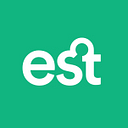Startup? Kill the Quarterly Product Roadmap
Product Managers everywhere — from small startups to Google — waste countless hours making high-fidelity product plans that stretch months (and even years!) ahead. At Earnest, we’ve found a better way: the rolling roadmap.
Quarterly Roadmaps Don’t Work (For Us)
If you use quarterly product roadmaps, this story might sound familiar:
The quarter is about to begin, so you meet with all your stakeholders, T-shirt-size (S,M,L) your prioritized product backlog with the engineers, figure out what projects can fit in the quarter, take the proposal back to the stakeholders for review, estimate the engineering cost in more detail, and build out a full product roadmap with target delivery dates.
What’s the problem?
- You hardly ever stick to it. A new deal comes through and priorities shift, or another team is slipping and resources need to be shuffled, leaving you with fewer engineers than originally planned.
- Do you even want to stick to it? Startups always need to be working on the most valuable and highest ROI projects. If that’s not what’s on the roadmap, to hell with the planned roadmap! (Although, you may want to examine why this project was missed..)
- It’s expensive. Projects 2–3 months out often aren’t fully defined and will need to be revisited. Making plans and half-baked estimates for a roadmap that might become obsolete cannot be the best use of everybody’s time.
But we need quarterly roadmaps to make resourcing decisions!
Not necessarily. If you’re allocating resources based on projects in the upcoming quarter, you might be missing the bigger picture. Resource allocation at Earnest is instead determined by Product Initiatives. These are company-wide strategic themes that typically last about 2–6 months and influence the projects we prioritize.
The Rolling Roadmap
The product roadmap at Earnest is now divided into 3 rolling time horizons: #Now, #Next, and #Future.
#Now
This is the work currently in flight — in development/spec’ing/design — and typically covers the next 4–6 weeks. Projects in #Now have concrete milestones and target delivery dates with an expected 90% confidence level.
#Next
This bucket is a prioritized backlog of projects that cover the next 2–3 months. It gives the company visibility into (and the ability to change) the relative prioritization of upcoming projects.
Projects in #Next are not supposed to be fully-defined: Each project has a Concept Doc — a high-level, maximum 1-page product brief that outlines the problem definition, goals, and rough description of the project. Engineering estimates are T-shirt sized (S, M, L, XL) and are expected to have a ~50% margin of error.
In my opinion, the #Next bucket is the most effective part of the new framework because it aligned the company’s expectations and technical teams’ realities. An agile and inexpensive roadmapping process means that we spend more time working on what matters most, and the entire business understands that it may change.
#Future
We use the #Future bucket for vague product ideas that align with our vision and other projects 3+ months out.
Don’t Be Afraid to Iterate
What works for a 40-person startup probably won’t work for a 200-person startup. Since joining Earnest, I’ve seen our roadmapping process change nearly every quarter — each time for the better. In the same way that product development should be agile and iterative, so too should the processes we use to develop them.
So, will our process change again? Probably. And that’s a good thing.
Elyse is a Product Manager at Earnest. Prior to that she co-founded a healthcare hardware startup. She has a degree in Economics from the University of McGill.
Earnest is a San Francisco-based technology company building a modern bank for the next generation. Our Product Management team is a nascent group of technical, entrepreneurial, jacks and jills of all trades, and we are actively hiring!

